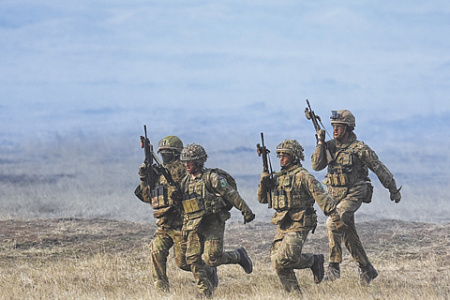
Last year, the level of military spending in the world was the highest since 1990. This follows from the annual report of the Stockholm Peace Institute (SIPRI), published recently. The main increase in military spending is in Europe and the Middle East. Russia was also among the leaders. If the report’s data is correct, the world will not expect stability in the near future. However, experts note that there is a positive side to the increase in defense spending. This can spur the development of scientific and technological progress, when the achievements of the military-industrial complex (MIC) will flow into the civilian sector.
The authors of the report estimated that total military spending, which has been growing globally for several years in a row, reached $2.7 trillion in 2024. That’s a record in itself.
But it is even more significant that compared to the year before last, they immediately increased by 9.4%. Such a leap has not occurred since the end of the Cold War. This is clear evidence that the military-industrial complex of the world’s leading countries has adapted to a situation where several major armed conflicts are taking place on the planet.
“More than 100 countries around the world have increased their military spending in 2024. As governments increasingly prioritize military security, often at the expense of other budget items, economic and social compromises to achieve this goal may have a significant impact on society in the coming years,” the SIPRI speakers noted.
Indeed, military spending has become an important item in the budgets of most industrialized countries around the world. For the sake of rearmament, governments are ready to reduce social costs and put up with economic losses. For example, the UK is going to spend 3% of its GDP on defense. The Labor Party in power is not afraid to deprive vulnerable segments of the population of certain support for this (see NG dated 04/23/25). But the British left has traditionally opposed militarization. Now times have changed.
SIPRI estimates that Russia spends 7.1% of its GDP on defense, or 19% of government spending, or $149 billion. According to the report, Moscow’s military spending increased by 38% in 2024. The authors of the document refer to Russia as Europe. Most of the countries on this continent are members of NATO. The alliance members are tasked with achieving spending of 3% of GDP on defense. However, the urgent task now is to increase this figure to 5%. So it turns out that Russia is overtaking NATO in terms of spending. In total, according to SIPRI, Europe increased military spending by 17%. Almost all countries except Malta began to spend more on the army. Ukraine increased spending to $64.7 billion, or 34% of its GDP, the largest percentage in the world. Kiev spends almost all of its tax revenues on defense needs.
Americans have increased defense spending by only 5.7%, but in absolute terms, U.S. military spending accounts for two–thirds of similar spending by NATO member countries, totaling $1.5 trillion, more than the rest of the world.
In addition to Europe, countries in the Middle East are spending more and more on the army.
The current situation largely repeats the Cold War, not only in terms of numbers, but also in terms of the political context, says Andrey Sidorov, Head of the Department of International Organizations and World Political Processes at the Faculty of World Politics at Moscow State University.
This is exactly the reality that Western countries are trying to create and show to the population, when even the internal political struggle suggests that defense spending should increase. “If military spending does not increase, the opposition may claim that the authorities are endangering the country’s security,” the expert explained to NG.
He added that similar processes took place after the Second World War. At that time, a powerful ideological factor was at work: it was easier to convince Westerners of the danger of the communist USSR.
“In the early years after World War II, the United States tried to convert, but unsuccessfully. And then the Cold War came in handy. It began during the recession of the American economy in 1947-1948, associated with an attempt to rebuild the economy. It was then that President Harry Truman realized that the military-industrial complex did not need to be curtailed. But the Americans later adapted the military industry for civilian needs, while the USSR did not,” says the expert.
He recalled that the military industry is the engine of innovative solutions. It is possible that this will happen this time. “Under this case, Donald Trump can also carry out reindustrialization. But whether he will succeed is a separate question. It should also be remembered that the Chinese issue is also important and also contributes to the increase in military spending,” says Sidorov.
